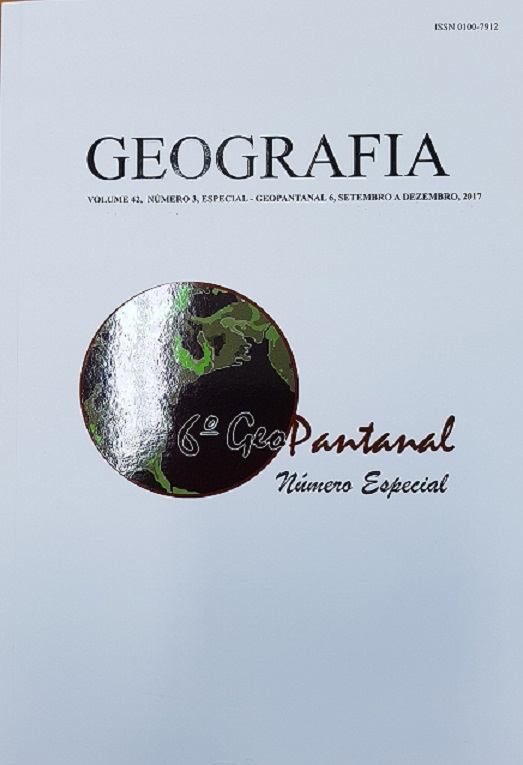SPATIOTEMPORAL EVOLUTION OF THE MARGINS OF LAKE UBERABA, PANTANAL FLOODPLAIN (BRAZIL)
DOI:
https://doi.org/10.5016/geografia.v42i3.13096Resumo
Aquatic macrophytes are important components of wetland ecosystems, and studying them contributes to a better understanding of ecological succession in the Pantanal. The function and history of floating macrophytes on the shores of Lake Uberaba, located on the Paraguay River floodplain, were examined. A multitemporal analysis of Landsat satellite images in the years 1984-2015 was conducted. For the analysis, a land cover map was generated with three classes: water, aquatic macrophytes, and surroundings (undefined vegetation). The results revealed ~21.4% decrease in open water area of the lake over a period of 26 years (-4.7 km2/yr.). The expansion of vegetation helps explain the loss of open water and the recent shrinkage of Lake Uberaba. Macrophyte surface area along the lake margins grew by 1.4 km2/yr. Through ecological succession, the growth and decay of aquatic plants (r-strategists) along the lake shore likely provided the soil substrate needed for colonization by terrestrial plant assemblages (k-strategists). This hypothesis that we propose to describe the evolution of dynamic geomorphological processes in Lake Uberaba should be tested in other areas to verify its applicability to similar systemsDownloads
Publicado
Edição
Seção
Licença
Os autores mantém os direitos autorais e concedem à GEOGRAFIA o direito de primeira publicação, com os artigos simultaneamente licenciados sob a Licença Creative Commons BY 4.0, que permite o compartilhar e adaptar os artigos para qualquer fim, desde que sejam dados os créditos apropriados e as disposições dos direitos de imagem, de privacidade ou direitos morais. Outras atribuições legais podem ser acessadas em: https://creativecommons.org/licenses/by/4.0/legalcode.en.
Geografia, Rio Claro, SP, Brasil - eISSN 1983-8700 está licenciada sob a Licença Creative Commons BY 4.0





